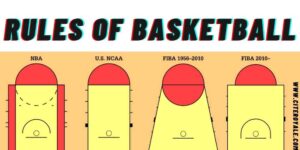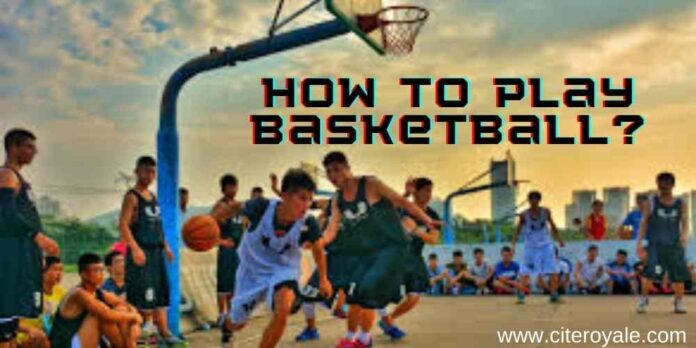Basketball goes back to 1891 and from that point forward has developed into a sport played all over the globe. It is the only big sport of U.S. inception and was imagined by James Naismith (1861–1939) approximately December 1, 1891, at the International Young Men’s Christian Association (YMCA) Training School (presently Springfield College), Springfield, Massachusetts, where Naismith was an educator in physical education.
For that first game of basketball in 1891, Naismith utilized as objectives two half-bushel peach baskets, which gave the sport its name. The understudies were eager. After much running and shooting, William R. Pursue made a midcourt shot—the solitary score in that noteworthy challenge. Word spread about the recently created game, and various affiliations composed Naismith for a duplicate of the standards, which were distributed on January 15, 1892, issue of the Triangle, the YMCA Training School’s paper.
Also read: How to make money from Football without betting?
The objective of the game
The main objective of basketball is to toss the ball (basketball) into a hoop to score points. The game happens on a rectangular court and relying upon which segment of court you effectively toss a ball into the bin will rely upon the number of points are scored. The ball can be moved around by dribbling or passing the ball. Toward the finish of the game, the team with the most points is announced as the champ.
Players and equipment
Each team is comprised of 12 players with just 5 permitted on the court at a time. The positions are separated into Point Guard, Shooting Guard, Center, Small forward, and Power Forward. Every player will at that point take up a situation on the court however are permitted to move around however they see fit.
The court is rectangular molded and measures 91 feet in length and 50 feet wide. There exists a midway line wherein a little circle is found in the center; this is the place where the game beginnings with a tip-off (the ball is tossed noticeable all around by the arbitrator and a player from each team attempts to win ownership for their team). At each finish of the court are two baskets both 10 feet in tallness. A three-point bend is an external ring, while in that is the key that incorporates a free toss line.
Everything necessary to play is a court and basketball. Teams should wear coordinating strips for certain players deciding to wear gum shields and face covers for insurance. The game is separated into 4 brief quarters with each quarter being 12 minutes long. In the middle of the second and third quarter is a brief half time stretch.
Positions in basketball
The five players that can play on the basketball court at any time are categorized as:
- Point guard: Usually players with the best ball-handling abilities and vision in the team play as point guards. A point guard’s essential job is to arrange both hostile and cautious plays and set up scoring open doors for team-mates.
- Shooting guard: This player is the best long-range and mid-range shooter on the team. Players watching the position continually search for three-pointers or can help drag safeguards out wide to make space close to the bushel for their team-mates.
- Small forward: Playing as short forward necessities a flexible range of abilities. It requires strength and stature just as speed and dribbling capacities. Mid-reach and short-range shooting capacities are additionally significant.
- Power forward: A power forward is to some degree like a small forward however with a greater spotlight on physicality. A power forward is normally a foil for the center and is the team’s most reliable scorers from inside the paint.
- Center: Usually the tallest player in the team, a center is needed to consume the space closest to the crate in the two parts. In guard, they are entrusted to pick bounce back and block resistance shooters while their hostile obligations expect them to polish off short-range moves or shield out protectors to permit their team-mates a spotless drive at the bushel.
Basketball points-scoring system
There are three scoring numbers for basketball players as follows:
- Three-point shot: Shooting and scoring a field ball from anyplace outside the three-point line bend wins the team three points. These are alluded to as three-pointers.
- Two-point shot: A field goal that is scored from inside the zone encompassed by the three-point bend in the resistance half is worth two points. These are called two-pointers.
- One-point shot: Points can likewise be collected through free-tosses, which merit a point each. Free tosses are granted to a team when the resistance team fouls.
During free toss, the fouled player is permitted a fixed number of shots – relying upon the nature and arbitrator’s translation of the foul submitted – at an open bushel from anyplace inside the free-toss hover with the two of his feet behind the free-toss line. Unlawful physical contact or hindrances without the goal of winning the ball by a protector when a hostile player is meaning to shoot is viewed as a foul.
Rules of Basketball

Just like other games, basketball has a certain number of rules that must be followed to play a fair game.
- Each team can have a limit of 5 players on the court at any one time. Replacements can be made the same number of times as they wish inside the game.
- The ball must be moved by one or the other dribbling (skipping the ball) or passing the ball. When a player puts two hands ready (excluding getting the ball) they can’t then spill or move with the ball and the ball should be passed or shot.
- After the ball goes into a team’s half and they win ownership back the ball should then make it back over the midway line inside 10 seconds. On the off chance that the ball neglects to do as such, at that point, a foul will be called and the ball will be turned over.
- Each team has 24 seconds to at any rate shot at the basket. A shot establishes either going in the basket or hitting the edge of the basket. If after the shot is taken and the ball neglects to go in the basket then the shot clock is restarted for an additional 24 seconds.
- The team attempting to score a basket is known as the offense while the team attempting to keep them from scoring is known as the safeguard. The protection should do everything they can to prevent the offense from scoring by either impeding a shot or keeping a shot from being discharged.
- After each fruitful basket, the ball is then gone over to the resistance.
- Fouls submitted all through the game will be amassed and afterward when arrived at a specific number will be at last be granted as a free toss. A free toss includes one player from the offensive team (the player fouled) to make an effort unopposed from the free toss line. Contingent upon where the foul was submitted will rely upon the number of free tosses a player gets.
- Infringement in basketball incorporates voyaging (making more than one stride without ricocheting the ball), twofold spill (getting the ball dribbling, halting at that point dribbling again with two hands), goaltending (a defensive player meddles with the ball voyaging downwards towards the basket) and backcourt infringement (when the ball passes the midway line the offensive team can’t take the ball back over the midway line).



![What are the positions in Basketball? [Detailed Guide] positions in basketball](https://www.citeroyale.com/wp-content/uploads/2021/02/positions-in-basketball-218x150.jpg)



